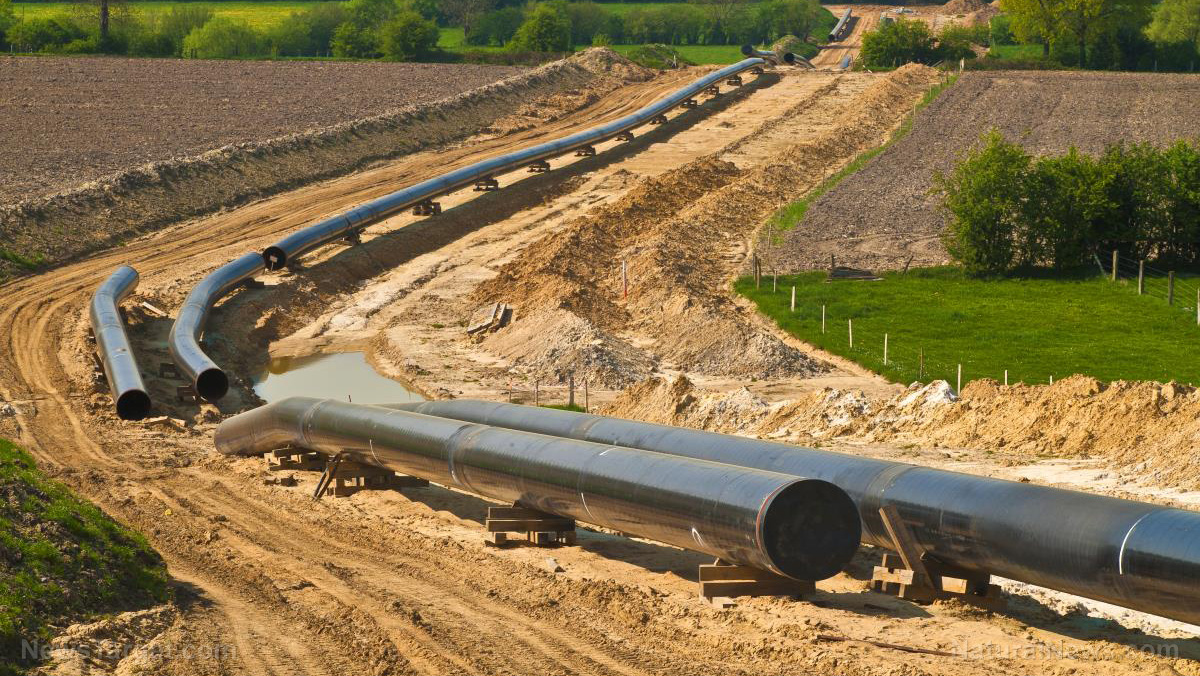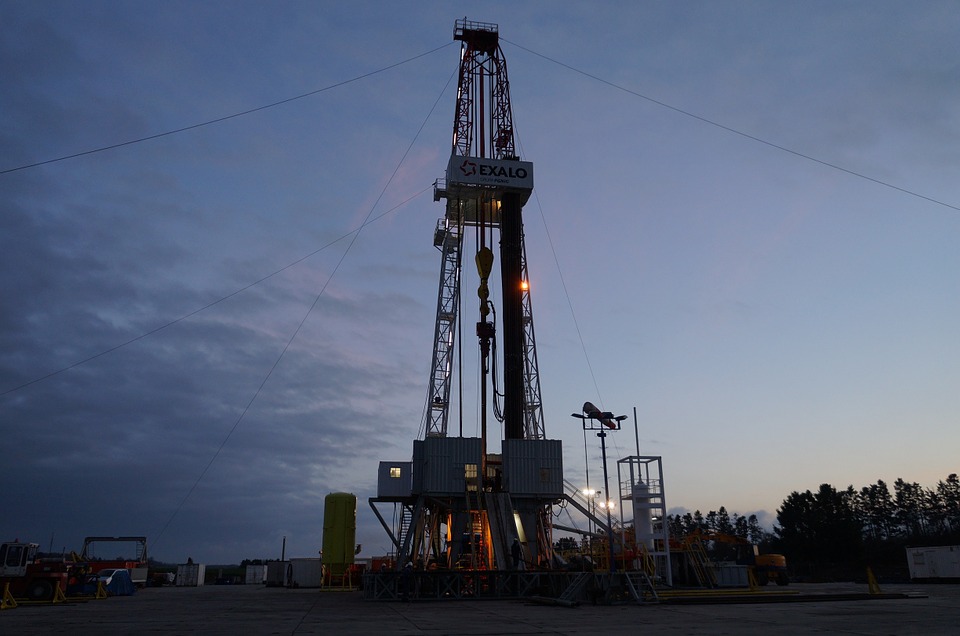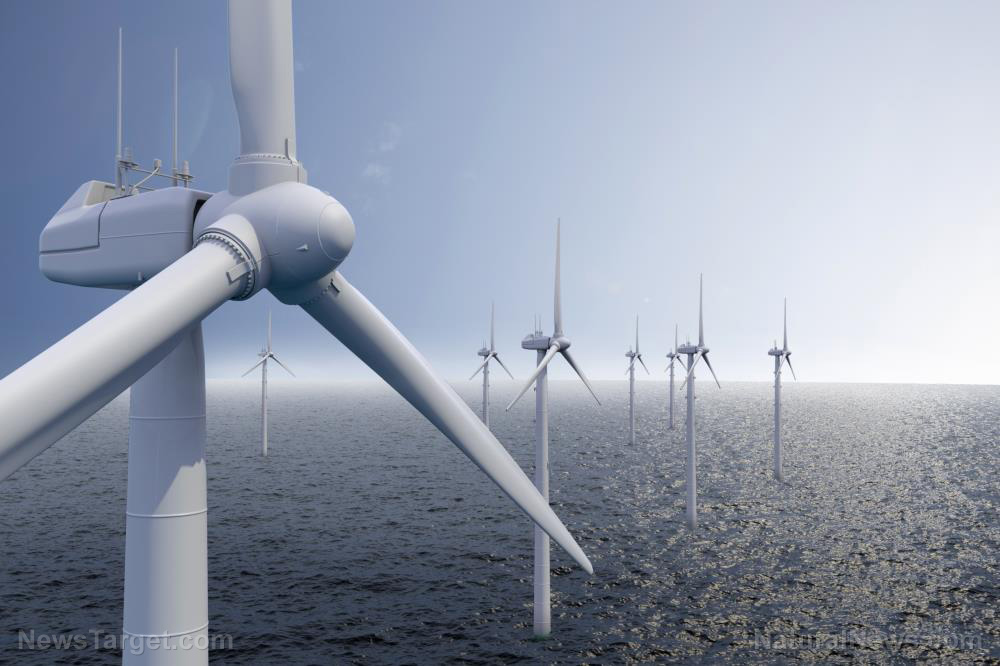Google’s nuclear bet on clean energy faces scrutiny amid accusations of greenwashing AI’s soaring power demand
05/10/2025 / By Willow Tohi

- Google is investing in nuclear energy to power its AI operations, partnering with Kairos Power (molten salt reactors by 2030) and Elementl Power (three potential 600MW fission reactor sites). However, details on reactor designs and locations remain unclear, and regulatory hurdles could delay timelines.
- Google’s 2024 emissions rose 13% year-over-year, driven by AI data centers. AI infrastructure now consumes energy equivalent to midsize cities, with global demand projected to grow by 3,500 TWh by 2027. Despite Google’s claim of 90% renewable energy use, critics argue fossil fuels still fill gaps when renewables fall short.
- SMRs promise safer, scalable nuclear power but face unproven technology, high costs (~$1B per 300MW unit) and regulatory delays. Past failures (e.g., NuScale’s canceled Idaho project) and the Vogtle plant’s 13-year delay raise doubts about meeting AI’s urgent energy needs before 2030.
- Local opposition (e.g., protests against Kairos’ Alabama site), nuclear waste concerns and slow NRC approvals threaten deployment. Meanwhile, cheaper wind projects ($500M per 1,000MW) outpace SMRs in cost efficiency.
- Microsoft’s delayed carbon-neutral target reflects broader struggles. Critics warn that without scalable clean energy (like SMRs) or grid decentralization, tech’s climate goals may fail as AI’s energy demand skyrockets.
Google has deepened its commitment to nuclear energy as part of its strategy to address the environmental impact of its surging artificial intelligence (AI) operations, but analysts and critics warn the details remain sketchy—and the timeline troublingly distant. On May 7, the tech giant announced a partnership with nuclear developer Elementl Power to advance three potential fission reactor sites in the U.S., pledging early-stage capital to prepare the sites for reactors each targeting 600 megawatts of capacity. This follows Google’s October 2024 deal with Kairos Power to deploy its molten salt small modular reactors (SMRs) by 2030.
The tech giants’ nuclear gambit
Google’s dual partnerships reflect a strategic pivot to nuclear as a potential linchpin for achieving its climate goals. Kairos Power, a thriving startup backed by investors like Microsoft, specializes in molten salt reactors (MSRs), which use liquid rather than solid fuel, enabling safer operation at higher temperatures and passive cooling. These features could enhance efficiency, but the technology remains untested at scale. Meanwhile, Elementl Power, led by CEO Christopher Colbert (former head of NuScale Power), aims to utilize advanced SMR designs that promise faster deployment than traditional reactors.
However, the Elementl agreement is plagued by ambiguity: no specific reactor design has been finalized, sites remain undisclosed, and regulatory hurdles—such as obtaining Nuclear Regulatory Commission (NRC) licensing for novel reactor technologies—threaten to stretch timelines further. Kairos faces similar challenges. While the company has secured federal funding and early-stage permits, its roadmap for delivering its first commercial reactors by 2030 relies heavily on scaling unproven systems and navigating the labyrinthine NRC approval process.
The AI energy crunch and its climate toll
Google’s pivot to nuclear arrives amid a reckoning over the tech sector’s energy guzzling. Its 2024 environmental report revealed a 13% annual rise in greenhouse gas emissions, driven by data center expansions for AI training. The company’s emissions have jumped nearly 50% over five years, underscoring the trade-off between innovation and climate imperatives.
The AI-driven surge in data center energy demand is staggering. Modern facilities, averaging 200 MW apiece—sixfold the 2015 norm—are projected to consume an additional 3,500 terawatt-hours globally by 2027, per McKinsey. Google’s $75 billion 2025 investment in servers and infrastructure amplifies this demand. While the tech giant asserts 90% of its energy comes from renewables, skeptics question whether this includes Scope 3 emissions (indirect energy use). Critics like the Clean Energy Council note that data centers still often rely on fossil fuels during peak demand, as renewables are intermittent and energy storage, like lithium-ion batteries, lags behind.
SMRs: Silver bullet or pipe dream?
SMRs, initially hailed as a game-changer for their compact size and modular design, now face scrutiny over their scalability. NuScale’s abandonment of its Idaho project in 2023—a $3.4 billion fiasco—highlighted the financial and technical risks. The Vogtle plant’s 13-year delay added to nuclear’s challenging track record.
The World Nuclear Association’s goal of tripling nuclear capacity by 2050—backed by tech giants—ignores these realities. SMRs are unlikely to arrive before 2030, years after AI’s energy needs have exploded. According to The Register, “Advanced reactors are a long-term solution for an immediate problem.” Natural gas plants, polluting but quick to deploy, now fill the gap, further straining climate targets.
Local opposition and cost barriers
Public and regulatory pushback further complicates nuclear plans. Land use conflicts, concerns over nuclear waste storage and distrust in new reactor safety could stall site selection. For example, Kairos’ proposed facility in Huntsville, Alabama, faces protests over proximity to residential areas. Meanwhile, cost remains prohibitive: SMRs may approach $1 billion per 300MW unit, far exceeding the 500 million per 1,000 MW wind projects.
Corporate climate pledges in jeopardy
Microsoft’s delay of its 2030 “carbon-negative” target signals a sector-wide dilemma. Sustainability advocates argue the “AI revolution has barely begun,” with corporate climate pledges increasingly unmoored from reality. The Ceres NGO warns that tech giants must commit to 100% renewable energy and invest in grid decentralization to offset AI’s footprint.
A crossroads for innovation
Google’s bets on nuclear underscore the high-stakes balancing act between innovation and sustainability. While the partnerships aim to catalyze SMR development, their success hinges on overcoming regulatory inertia, cost barriers and public skepticism. As sustainability director Michael Terrell notes, “Without scalable baseload power, decarbonization remains a mirage.”
For now, the world watches—and waits. With coal and gas maintaining dominance, tech’s climate pledges rest on unproven nuclear technology.
Sources for this article include:
Submit a correction >>
Tagged Under:
AI, Big Tech, carbon footprint, electricity, energy demands, glitch, Google, greenwashing, new energy report, nuclear power, power
This article may contain statements that reflect the opinion of the author
RECENT NEWS & ARTICLES
COPYRIGHT © 2017 CARBON DIOXIDE NEWS



















